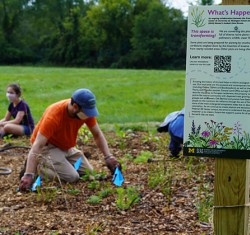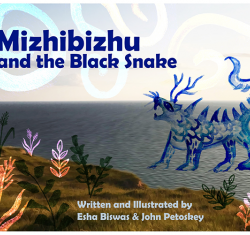
 back to all faculty
back to all faculty
Sara Ana Adlerstein Gonzalez

About
Associate Research Scientist Adlerstein Gonzalez, PhD, is an applied ecologist and visual artist who explores the connections between art and science. As a scientist, she investigates processes at the ecosystem level using statistical modeling. Her main interest in research is to understand ecological processes and population dynamics of aquatic organisms at the ecosystem level, in particular those aspects that are relevant to resource management. Recently she has been investigating spatial and temporal scales needed to study the spatial distribution of fish abundance and obtain indices of abundance of fish populations in marine and freshwater ecosystems. Since fish, as other aquatic organisms, cannot be directly observed, large-scale population studies must rely on analysis of data from scientific surveys or commercial operations. The analysis of this information requires specialized statistical modeling. Currently Alderstein Gonzalez’ focus is in the Great Lakes.
Publications
-
Adams, J., S. Riley and S. Adlerstein. 2009. Development of fishing power corrections for 12- and 21-m trawls used in the USGS Lake Huron fall bottom trawl survey. – Great Lakes Fishery Commission Report Series, Ann Arbor, MI.
-
Fishman D., S. Adlerstein, H. Vanderploeg, G. Fahnenstiel, and D. Scavia, 2009. Causes of Phytoplankton Changes in Saginaw Bay, Lake Huron during the Zebra Mussel Invasion. Journal of Great Lakes Research 35(4):482-495
-
Adlerstein, S., Rutherford, E., Clapp, D., Claramunt, R., and J. Johnson. 2009. Seasonal migration of salmonids in the Great Lakes interpreted from coded-wire-tag recoveries. ICES CM 2009/J:13. 25 pp
-
Fishman, D., S. Adlerstein, H. Vanderploeg, G. Fahnenstiel, S., and D. Scavia. 2010. Phytoplankton community composition in Saginaw Bay, Lake Huron, during the zebra mussel (Dreissena polymorpha) invasion: A multivariate analysis. Journal of Great Lakes Research 36: 9-19.
-
Goñi, R. R. Hilborn, D. Díaz, S. Mallol, and S. Adlerstein. 2010. Net contribution of spillover from a marine reserve to fishery catches. Marine Ecology Progress Series: Vol. 400: 233–243.
-
Towards comprehensive databases and coordinated fish surveys for ecosystem management in the Great Lakes. PI. Co-PIs Johnson, He, Michigan Department of Natural Resources, Schaeffer, Riley, US-Geological Survey; Mohr, Ontario Ministry of Natural Resources. Sponsor: Michigan Department of Natural Resources, $118,500
-
Quantitative tools to predict sea lamprey production on habitat: prioritizing dam removal and control decisions. PI. Co-PIs Rutherford, Wiley, Silverman, U of Michigan, Jones, Michigan State University; Zorn, Michigan Department of Natural Resources. Sponsor: Great Lakes Fishery Commission, $159,500.
-
Analysis of Tagging Data to Quantify Lake Trout Migration in Lake Michigan. PI. Co-PIs Rutherford, U of Michigan; Clapp, Jones, Michigan Department of Natural Resources; Netto US Fish and Wildlife Service. Sponsor: Great Lakes Fishery Trust, $120,381.
-
Great Lakes Biological Monitoring - zooplankton, benthos, chlorophyll. Co-PI. Co-PIs Johengen, Jude, Carter, Hensler, Riseng, Wiley, U of Michigan. Sponsor: Environmental Protection Agency-Great Lakes National Program, $2,499,267.
-
Communicating Great Lakes Science. Sponsor: National Science Foundation – in collaboration with Michigan Sea Grant – Lawrence Hall of Science, University of California, $64,000.
PhD, University of Washington (School of Fisheries)
MS, University of Washington (School of Fisheries)
MS, Universidad de Concepcion, Chile (Instituto de Biologia)
BA, Universidad de Concepcion, Chile (Instituto de Biologia)
Independent evaluator, Marine Stewardship Council (2009).



